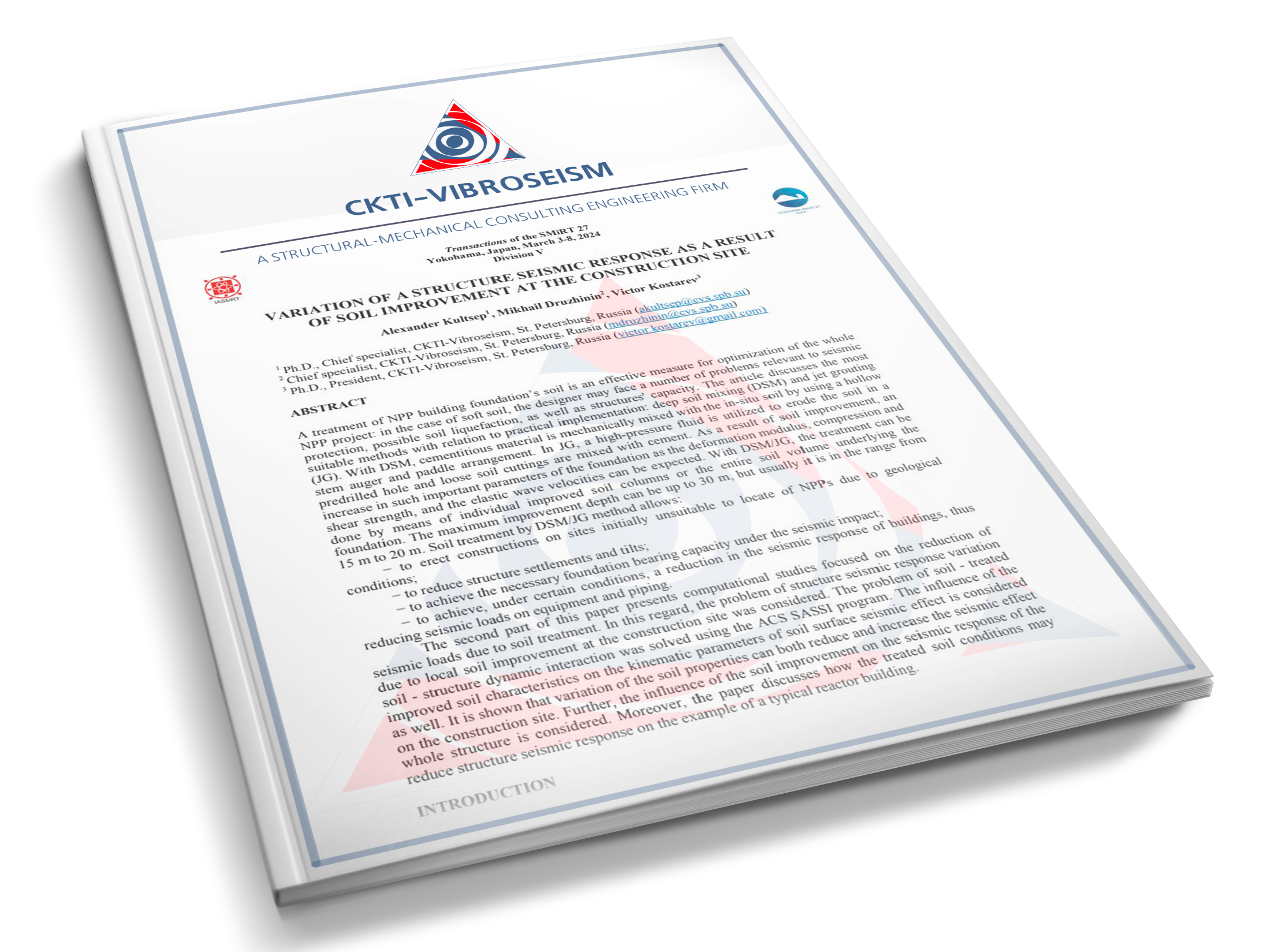Variation of a Structure Seismic Response as a Result of Soil Improvement at the Construction Site

- Авторы: : Кульцеп А.В. [Alexander V. Kultsep], Дружинин М.А. [Mikhail A. Druzhinin], Костарев В.В. [Viktor V. Kostarev]
- Редактор: English
- Страницы: 5
- Библиотека: Conference Papers
- Год: 2024
- Файл: Kultsep_SMIRT27_Variation_Structure_Response
Просмотры: 2069
A treatment of NPP building foundation's soil is an effective measure for optimization of the whole NPP project: in the case of soft soil, the designer may face a number of problems relevant to seismic protection, possible soil liquefaction, as well as structures’ capacity. The article discusses the most suitable methods with relation to practical implementation: deep soil mixing (DSM) and jet grouting (JG). With DSM. cementitious material is mechanically mixed with the in-situ soil by using a hollow stem auger and paddle arrangement. In JG. a high-pressure fluid is utilized to erode the soil in a predrilled hole and loose soil cuttings are mixed with cement. As a result of soil improvement, an increase in such important parameters of the foundation as the deformation modulus, compression and| shear strength, and the elastic wave velocities can be expected. With DSM/JG. the treatment can be done by means of individual improved soil columns or the entire soil volume underlying the foundation. The maximum improvement depth can be up to 30 m. but usually it is in the range from 15 m to 20 m. Soil treatment by DSM/JG method allows:
- to erect constructions on sites initially unsuitable to locate of NPPs due to geological conditions:
- to reduce structure settlements and tilts:
- to achieve the necessary foundation bearing capacity under the seismic impact;
- to achieve, under certain conditions, a reduction in the seismic response of buildings, thus reducing seismic loads on equipment and piping.
The second part of this paper presents computational studies focused on the reduction of seismic loads due to soil treatment. In this regard, the problem of structure seismic response variation due to local soil improvement at the construction site was considered. The problem of soil - treated soil - structure dynamic interaction was solved using the ACS SASSI program. The influence of the improved soil characteristics on the kinematic parameters of soil surface seismic effect is considered as well. It is shown that variation of the soil properties can both reduce and increase the seismic effect on the construction site. Further, the influence of the soil improvement on the seismic response of the whole structure is considered. Moreover, the paper discusses how the treated soil conditions may reduce structure seismic response on the example of a typical reactor building.
 ООО «ЦКТИ-Вибросейсм»
ООО «ЦКТИ-Вибросейсм» 
